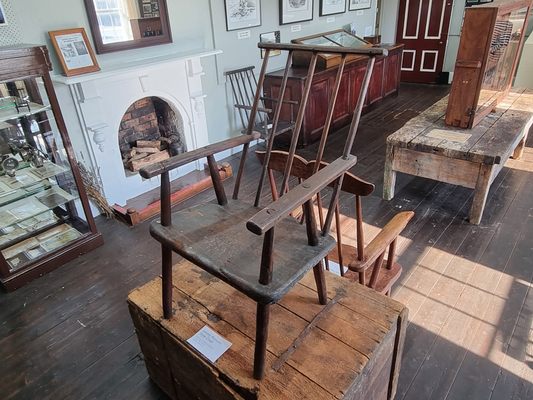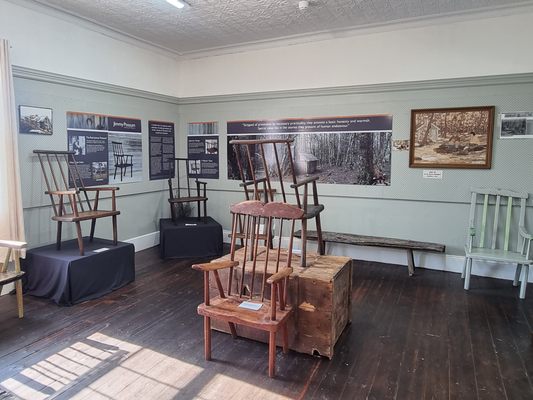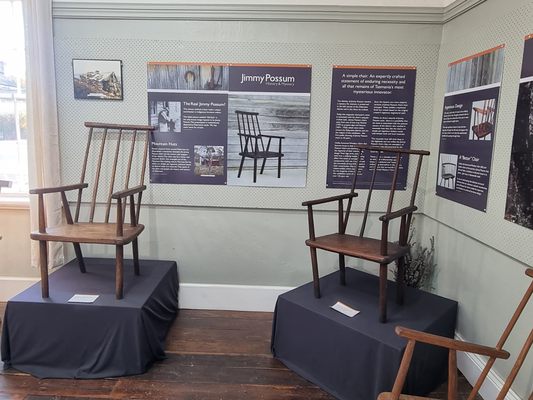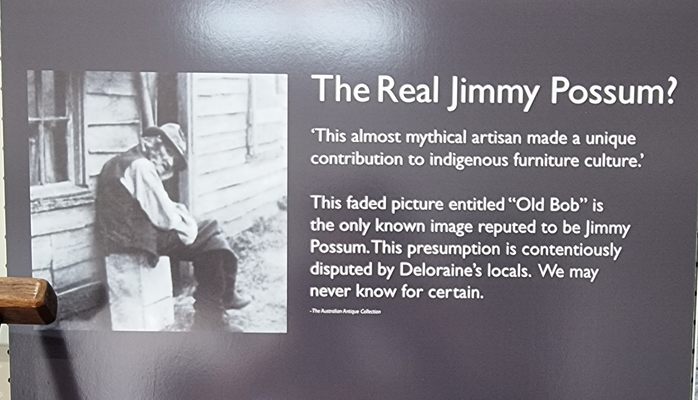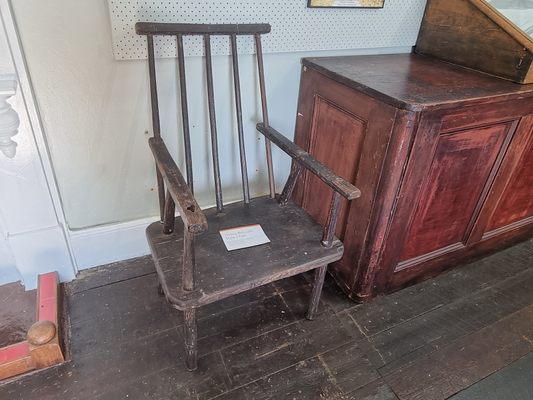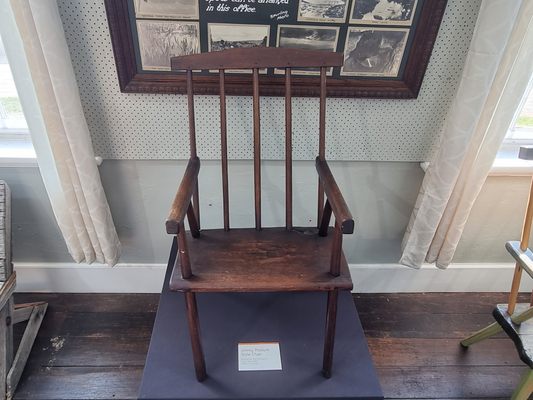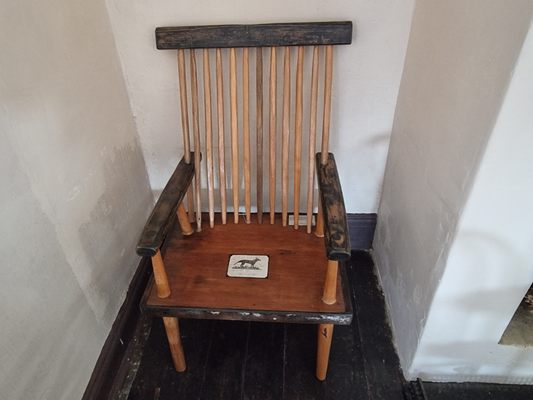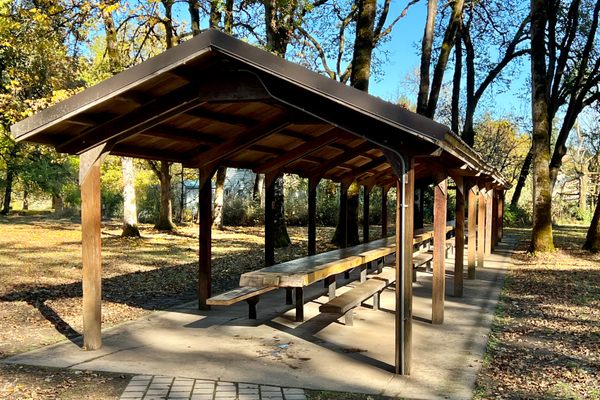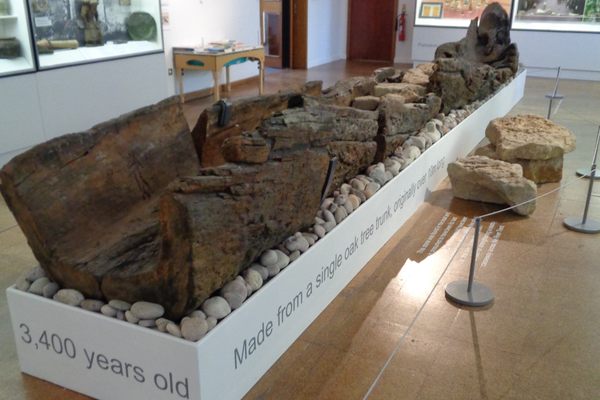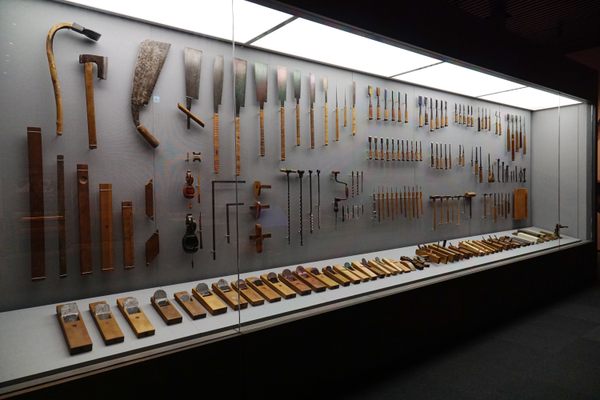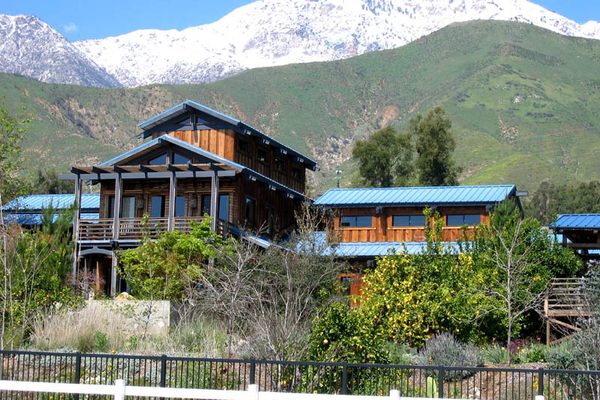About
The Great Western Tiers in Tasmania is a region of dense, dark forests, sleeting rain, and Antarctic winds—at turns wild and beautiful, rugged and unforgiving. It is perhaps because of this harsh environment that one of the most comfortable and well-built chair designs in the world was born.
The Jimmy Possum chair is simplistic in design and ingenious in function. First appearing around 1875, the chairs were hewn from scrap wood and built with interlocking components, a feature borne out of a lack of building materials—the legs, arms, and back passed through the bottom of the chair, eliminating the needs for nails. This design also allowed for equal weight dispersal; the more use that the chair got, the stronger it became. With no fear of joints becoming loose, or legs going wobbly, the result was a virtually indestructible piece of furniture.
Jimmy Possum chairs, both original and new, can still be found today. The chair’s namesake, however, remains shrouded in mystery. There are no official records of Jimmy Possum ever existing, and the only known photo purported to be of Jimmy Possum is highly contested. In lieu of facts, Deloraine has plenty of folk stories about their mysterious carpenter. One legend holds that Jimmy Possum was a town character who spent summers living in a large hollow tree, trading chairs for shelter during the winter months. Some believe he was an Aboriginal man who earned his nickname snaring possums. Others say Jimmy Possum wasn’t a man at all, but rather a cheeky possum whom locals nicknamed Jimmy after he took a liking to a stick chair that had been placed beneath his tree. Whoever he was, Jimmy Possum created a legacy that has stood the test of time—and provided many a comfortable seat to spin yarn or two about him.
The Deloraine and Districts Folk Museum has a permanent exhibition dedicated to Jimmy Possum chairs. Several are on display, ranging from historic originals (chairs built between 1875 and 1935) to modern builds (chairs built from 1975 onwards).
Related Tags
Know Before You Go
The Deloraine and Districts Folk Museum is located inside the Deloraine Information Centre and is open seven days a week, from 9 a.m. to 5 p.m.
Entry is $10 and includes the 'Yarn Story' silk artwork panel display.
Community Contributors
Added By
Published
June 28, 2021
